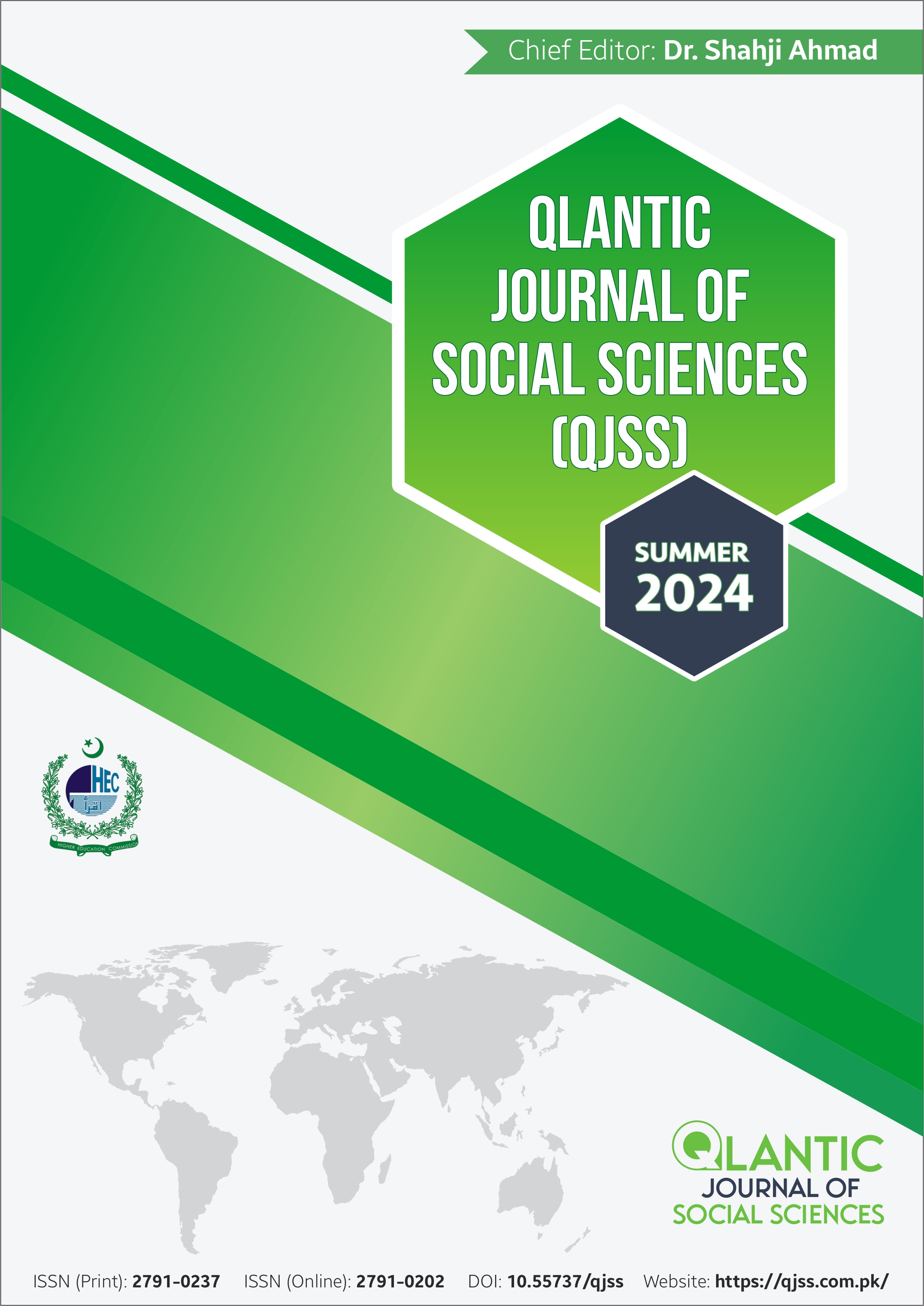Relationship among Learning Needs, Institutional Support and Assessment Experiences of Distance and Online Learners: A Survey Study
DOI:
https://doi.org/10.55737/qjss.853190551Keywords:
Learning Needs, Distance and Online Learning, Assessment Experiences, Institutional Support, University Students, Teaching-Learning ProcessAbstract
The objective of this study was to analyze the relationship between learning needs, institutional support, and the assessment experiences of students enrolled in distance and online learning programs. Cross-sectional quantitative survey design was used to collect the data from distance learners. In total, 518 distance learners submitted their responses for this study. The Learning Needs Questionnaire (LNQ) (Ho & Lim, 2021), Institutional Support Questionnaire (Lim & Ho, 2022), and Assessment Experiences Questionnaire (TESA Tools, 2019) were used to obtain responses from students enrolled in various distance education programs. It was found that although there was a moderate and statistically significant relationship among the three variables, the statistical results for the three scales showed different patterns for some demographic variables, i.e., age group, degree program, semester of the study, region, and academic performance. It is recommended that the needs and perspectives of students be taken into account in order to provide them with effective learning services and assessment experiences. For this purpose, comprehensive profiling of students and their feedback on courses every semester with the help of the latest technological resources may be helpful to provide them with relevant support and facilitation in the teaching-learning and assessment process.
References
Bojović, Z., Bojović, P.D., Vujošević, D. & Šuh, J. (2020). Education in times of crisis: Rapid transition to distance learning. Computer Applications in Engineering Education, 28(6), 1467-1489. https://doi.org/10.1002/cae.22318
Cicha, K., Rizun, M., Rutechka, P. & Strzelecki, A. (2021). COVID-19 and Higher Education: First-Year Students’ Expectations toward Distance Learning. Sustainability, 13(4), 1889; https://doi.org/10.3390/su13041889
Elfirdoussi, S., Lachgar, M., Kabaili,H., Rochdi,A., Goujdami, D. & Firdoussi, L. El. (2020). Assessing distance learning in higher education during the COVID-19 pandemic. Education Research International, 2020(1). 8890633. https://doi.org/10.1155/2020/8890633
Fidalgo, P., Thormann,J., Kulyk, O. & Lencastre, J. A. (2020). Students’ perceptions on distance education: A multinational study. International Journal of Educational Technology in Higher Education, 17-18. https://doi.org/10.1186/s41239-020-00194-2
Ho, Y. Y. & Lim, L. (2021). Targeting student learning needs The development and preliminary validation of the Learning Needs Questionnaire for a diverse university student population. Higher Education Research & Development, 40(7), 1452–1465. https://doi.org/10.1080/07294360.2020.1818062
Kara, M., Erdoğdu, F., Kokoç, M. & Cagiltay, K. (2019). Challenges faced by adult learners in online distance education: A literature review. Open Praxis, 11(1), 5–22. https://doi.org/10.5944/openpraxis.11.1.929
Langegård, U., Kiani, K., Nielsen, S.J. & Svensson, P. Nursing students’ experiences of a pedagogical transition from campus learning to distance learning using digital tools. BMC Nursing, 20(23). https://doi.org/10.1186/s12912-021-00542-1
Lassoued, Z., Alhendawi, M. & Bashitialshaaer, R. (2020). An exploratory study of the obstacles to achieving quality in distance learning during the COVID-19 pandemic. Educ. Sci., 10(9), 232. https://doi.org/10.3390/educsci10090232
Lim, L., & Ho, Y. Y. (2022). Supporting student learning needs in tertiary education: Institutional support structures based on the Institutional Support Questionnaire. Behavioral Sciences, 12(8), 277. https://doi.org/10.3390/bs12080277
Maki, P.L. (2023). Assessing for learning: Building a sustainable commitment across the institution (2nd Ed). New York: Routledge.
Ministry of Education and Science of Ukraine Order. (2013). On the approval of the regulation on distance learning. https://zakon.rada.gov.ua/laws/show/z0703-13#Text
Mintii, I. S., Vakaliuk, T. A., Ivanova, S. M., Chernysh, O. A., Hryshchenko, S. M., & Semerikov, S. O. (2021). Current state and prospects of distance learning development in Ukraine. AREdu 2021: 4th International Workshop on Augmented Reality in Education, Kryvyi Rih, Ukraine. https://lib.iitta.gov.ua/id/eprint/726948/1/paper01.pdf
Parker, A. (1999). Interaction in Distance Education: The Critical Conversation. AACE Review (formerly AACE Journal), 13–17. Waynesville, NC USA: Association for the Advancement of Computing in Education (AACE). https://www.learntechlib.org/primary/p/8117/
Rajabalee, Y. B. & Santally, M. I. (2020). Learner satisfaction, engagement and performances in an online module: Implications for institutional e-learning policy. Education and Information Technologies, 26, 2623-2656. https://doi.org/10.1007/s10639-020-10375-1
Simonson, M., Zvacek, S. & Smaldino, S. (2019). Teaching and learning at a distance: Foundations of distance education (7th Ed). North Carolina: Information Age Publishing, Inc. Stevanović, A., Božić, R. & Radović, S.(2021). Higher education students' experiences and opinions about distance learning during the Covid-19 pandemic. Journal of Computer Assisted Learning, 37(6), 1682–1693. https://doi.org/10.1111/jcal.12613
TESA Tools. (2019). The assessment experience questionnaire. https://www.strath.ac.uk/media/ps/sees/ee/testa/TESTA_tools_AEQ.pdf
Tokarieva, A.V., Volkova, N. P., Degtyariova, Y. V., & Bobyr, O. I. E-learning in the present-day context: From the experience of foreign languages department, PSACEA. Journal of Physics: Conference Series 1840 (012049). https://doi.org/10.1088/1742-6596/1840/1/012049
Traxler, J. (2018). Distance Learning - Predictions and Possibilities. Educ. Sci., 8(1), 35. https://doi.org/10.3390/educsci8010035
Wong, R. (2020). When no one can go to school: Does online learning meet students’ basiclearning needs? Interactive Learning Environments, 31(1), 434–450. https://doi.org/10.1080/10494820.2020.1789672




